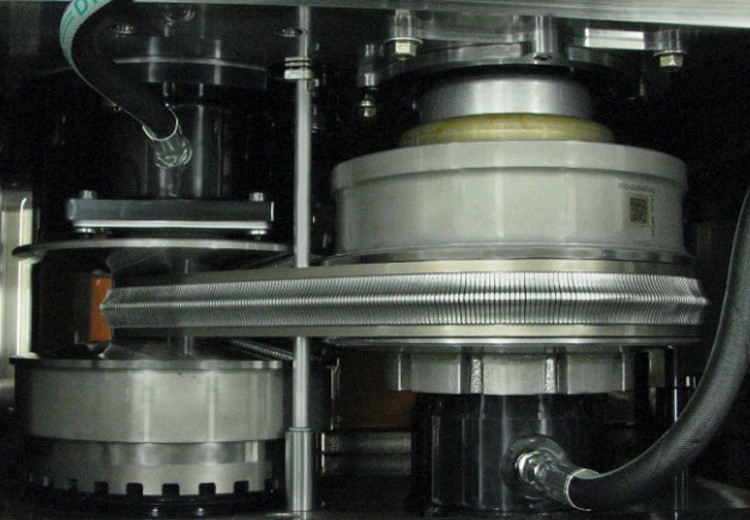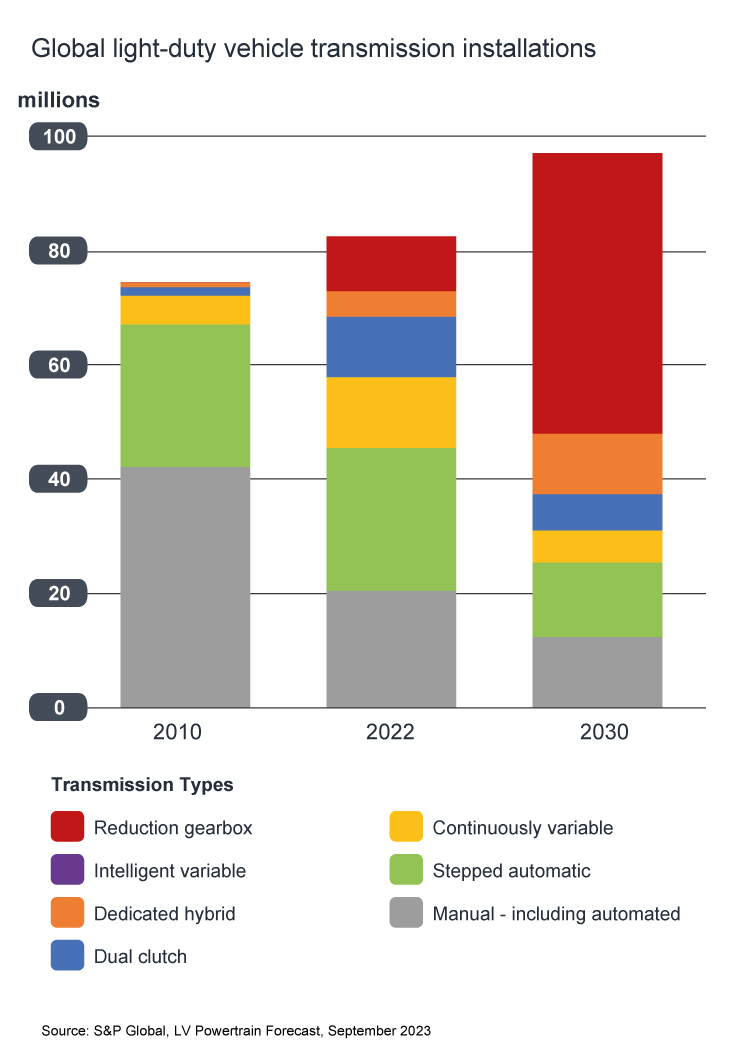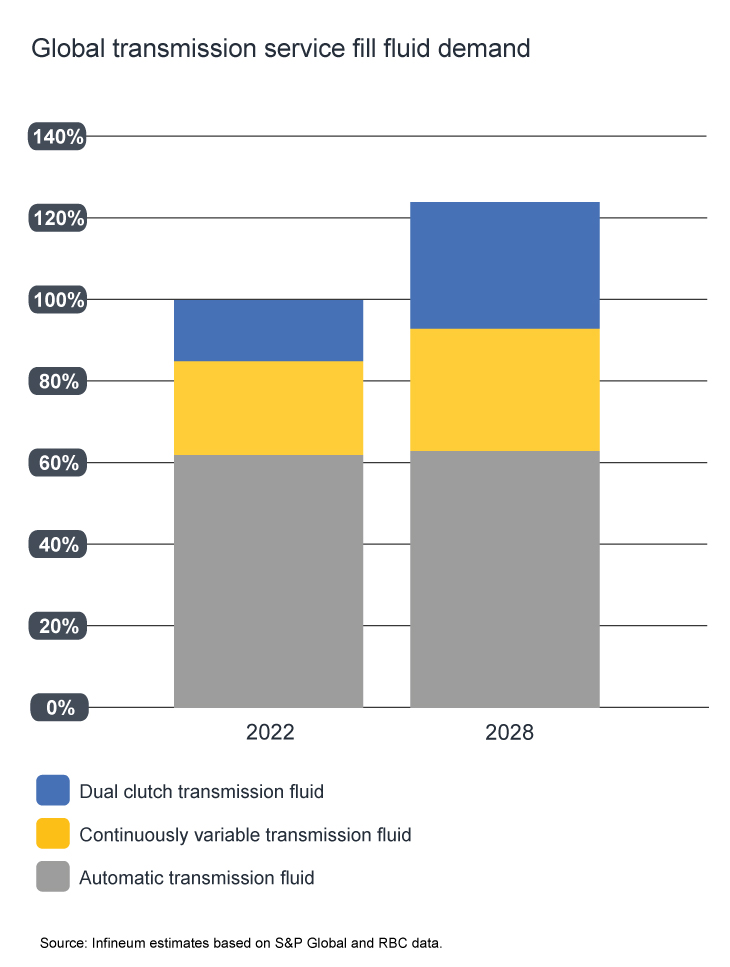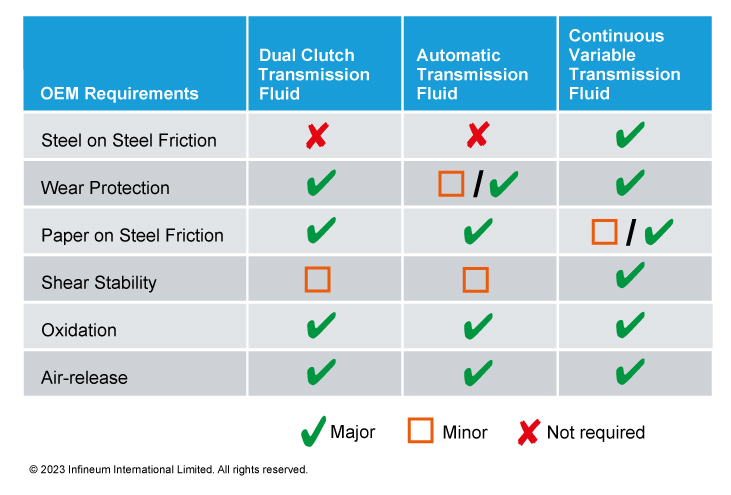Driveline
Energy efficient e-fluids
28 May 2024
07 November 2023
Key role for advanced fluids optimised to meet continuously variable transmission performance requirements

To deliver improved efficiency along with the great acceleration and a smooth driving experience customers expect, some OEMs have introduced continuously variable transmissions (CVTs) into both their conventional internal combustion engine and hybrid vehicle models. Shunichi Sakai, Infineum Operational Marketing Manager, assesses the market and explains how advanced CVT-specific fluids will be needed to service the growing CVT-equipped vehicle fleet.
Only a just over a decade ago, new light-duty production was dominated by vehicles containing manual and stepped automatic transmissions with four to six forward gears. But, the quest for improved fuel economy has driven innovation in this area and the number of gears has risen to between seven and ten and there has also been an increase in the use of alternative systems, including continuously variable and dual clutch transmissions (DCT). Today, the global transmissions market picture is increasingly diverse, a trend that is expected to continue with the growth of dedicated hybrid (DHT) and reduction (RED) systems for electrified vehicles.

CVTs, are automatic transmissions that use two variator pulleys and a push belt or chain instead of a planetary gear set. This gives an unlimited number of gear ratios, leading to seamless power delivery along with negligible torque interruption and power loss. The technology is popular with OEMs because it is small and light vs. manual and automatic alternatives and also gives fuel economy benefits. In addition, it is a good match for the typically small or mid-sized engines used in some regions and provides the smoother driving experience, good acceleration and fuel efficiency end users demand.
However, there are significant regional variations in the uptake of each transmissions type. While North America has remained a largely stepped automatic transmission (AT) market and in Europe manual transmissions are still popular, we have seen growth in CVT installations in most regions.
According to data from S&P Global, just over 15% of light duty global transmissions installations in 2022 were CVTs, which are especially popular in China, Japan and Korea. Looking ahead, although production is forecast to dip as the use of DHT and RED in electrified powertrains increases, in 2030 more than five and a half million CVT installations are expected. Several automotive manufacturers currently offer vehicles fitted with CVTs. And, while Honda and Toyota are clear leaders, other OEMs, including Nissan, Subaru, GM and Audi, also supply the technology.
This continued use of CVT in light-duty applications, and anticipated growth in North America, means that by 2028, over 140 million of the estimated 1.8 billion vehicles on the world’s roads could be expected to contain a CVT. This large and growing vehicle parc means that the market for CVT service fill fluids particularly in China, Japan, Korea and North America could be expected to grow.

Comparing the fluid requirements of the different automatic transmission systems side by side we can see a number of key differences. The most notable for CVT is the major requirement for steel on steel friction performance.

It is clearly important for CVT fluids to be optimised for a number of different performance parameters compared to fluids designed for AT and DCT applications. In addition to the requirements indicated in the table, CVT fluids must also be capable of operating over a broad temperature range.
To achieve all of these attributes requires a careful formulation balance. CVT fluids require precisely tuned friction control, balancing paper on steel and steel on steel friction, to ensure that when delivering the anti-shudder durability there is no sacrifice to steel on steel performance.
Infineum CVT additive technology provides broad coverage by leveraging balanced friction performance and delivers performance similar to most factory fill CVT fluids.
This performance has been proven in several key OEM applications employing both chain and push belt systems. In bench and in over 300,000 miles of field testing in six different vehicle types our technology performed better than or equal to the factory fill reference – delivering excellent steel on steel friction, anti-shudder and clutch friction durability.
As OEMs work to decarbonise they are looking for further improvements to vehicle fuel economy performance. CVT fluids need to provide performance characteristics that help to reduce energy loss through better viscosity profiles, while still delivering sufficient wear protection to the steel on steel surfaces. The challenge for transmission fluid producers is to combine as many of these desired characteristics as possible into one fluid.
In tests, Infineum additive technology in a low viscosity CVT fluid formulation has delivered similar wear protection performance as the reference OEM CVT fluid.
The pace of powertrain electrification in light-duty vehicles is accelerating in support of OEM’s decarbonisation ambitions. A number of manufacturers are using electrified CVTs in a variety of configurations in their hybrid models, where most currently use standard CVT fluids.
In our view, applications where the CVT fluid is in contact with an integrated motor bring new lubricant challenges, including the need to ensure oxidation control, materials compatibility and good electrical properties.
In tests, Infineum additive technology has delivered similar oxidation control, volume resistivity and copper corrosion performance as the reference OEM factory fill CVT fluid used for e-CVT applications.
As OEMs continue to assess the best ways to decarbonise, the future hardware picture looks increasingly diverse. Conventional ICEs and hybrids powered by zero-carbon fuels, such as hydrogen, could join the current mix of gasoline, diesel and electric vehicles in the global vehicle parc of the future. Whatever transmission hardware routes OEMs take in support of their emissions reduction and decarbonisation commitments, Infineum CVT additive technology will continue to ensure fluid technology keeps pace with the changing needs of this increasingly complex market.
Sign up to receive monthly updates via email